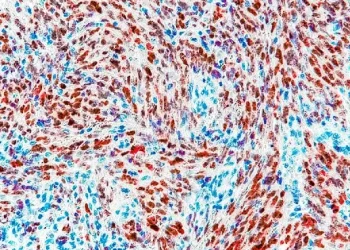A breakthrough NIH-funded study finds that a single injection of benzathine penicillin G is as effective as three doses in treating early syphilis, offering new hope amid rising U.S. infection rates and ongoing drug shortages.
Rising Urgency of Syphilis Treatment
The United States reported over 209,000 syphilis cases in 2023, the highest figure since 1950. Congenital syphilis also surged to nearly 3,900 cases, more than doubling since 2019.
Public health experts warn that untreated infections can cause severe organ damage, pregnancy complications, and higher HIV transmission risks.
Simplifying an Established Therapy
For decades, U.S. clinicians have used a three-dose regimen of benzathine penicillin G (BPG) to treat early syphilis. While effective, the treatment requires repeat visits and multiple painful injections, barriers that often prevent patients from completing therapy.
The new trial, supported by the National Institute of Allergy and Infectious Diseases (NIAID), shows that one dose works equally well, reducing both patient burden and drug demand.
Details of the NIH Clinical Trial
The late-stage study enrolled 249 adults with early syphilis across ten U.S. sites. Participants were randomly assigned to receive either a single intramuscular injection or three injections spaced over three weeks.
After six months, 76% of the single-dose group and 70% of the three-dose group achieved a successful serologic response.
Researchers found no significant differences based on HIV status, which is important since 64% of participants were HIV-positive.
Expert Commentary
“Benzathine penicillin G has been used for over 50 years, yet we continue learning how best to optimize it,”
said Dr. Edward W. Hook III, principal investigator and emeritus professor at the University of Alabama at Birmingham.
“These results support a simpler, equally effective approach.”
Carolyn Deal, Ph.D., of NIAID, added:
“The new findings are welcome evidence for reducing treatment barriers at a time when syphilis rates are alarmingly high.”
Public Health and Supply Implications
The U.S. has faced recurring shortages of BPG, often forcing clinicians to ration doses. By confirming the effectiveness of a single-dose regimen, the trial offers a solution that could stretch limited supplies further. This efficiency is particularly critical for maternal health programs, where timely treatment prevents congenital infections and infant deaths.
Cost and Equity Dimensions
Reducing from three injections to one is also a matter of health equity. Many patients face challenges such as unstable housing, limited transportation, or job constraints that make returning for follow-up visits difficult.
Simplifying care reduces these barriers and improves adherence.
2023 U.S. Syphilis Data Snapshot
| Statistic | 2023 Value | Context |
|---|---|---|
| Total reported syphilis cases | 209,253 | Highest since 1950 |
| Congenital syphilis cases | 3,882 | More than doubled since 2019 |
| Stillbirths/infant deaths | 279 | Preventable with screening and treatment |
| Rate per 100,000 population | 61.3 | Relatively stable from 2022 |
| Highest impact groups | American Indian/Alaska Native | Rates nearly triple national average |
What This Means Going Forward
The findings align with global guidance, as the World Health Organization already supports single-dose treatment for early syphilis. U.S. adoption could save healthcare systems more than $100 million annually while improving access during shortages.
- Patients face fewer visits and less disruption.
- Clinics can treat more people with limited supplies.
A Final Reflection
The NIH trial marks a turning point in syphilis care, showing that one injection of BPG is sufficient for early-stage treatment.
While more research is needed for later stages of the disease, this evidence supports simplified care that benefits patients, providers, and public health systems alike.
Sources: National Institutes of Health, CDC, Statista, and PAHO.
Prepared by Ivan Alexander Golden, Founder of THX News™, an independent news organization delivering timely insights from global official sources. Combines AI-analyzed research with human-edited accuracy and context.









